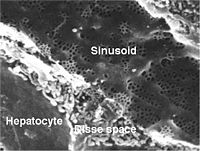
Photo from wikipedia
Every type of cell in an animal maintains a specific size, which likely contributes to its ability to perform its physiological functions. While some cell size control mechanisms are beginning… Click to show full abstract
Every type of cell in an animal maintains a specific size, which likely contributes to its ability to perform its physiological functions. While some cell size control mechanisms are beginning to be elucidated through studies of cultured cells, it is unclear if and how such mechanisms control cell size in an animal. For example, it was recently shown that RB, the retinoblastoma protein, was diluted by cell growth in G1 to promote size-dependence of the G1/S transition. However, it remains unclear to what extent the RB-dilution mechanism controls cell size in an animal. We therefore examined the contribution of RB-dilution to cell size control in the mouse liver. The RB-dilution model has two requirements. First, manipulations changing RB concentration drive corresponding changes in cell size, and second, the endogenous RB concentration decreases with cell size in G1. We found that both these requirements were met. Genetic perturbations decreasing RB protein concentrations through inducible shRNA expression or through liverspecific Rb1 knockout reduced hepatocyte size, while perturbations increasing RB protein concentrations in an Fah−/− mouse model increased hepatocyte size. Moreover, RB concentration decreased in larger G1 hepatocytes while the concentrations of the cell cycle activators Cyclin D1 and E2f1 remained relatively constant. Lastly, we tested how Rb1 manipulations affected G1/S cell size control in primary hepatocytes using live cell imaging. Loss of Rb1 weakened cell size control, i.e., reduced the inverse correlation between how much cells grew in G1 and how large they were at birth. Taken together, our results show that an RB- dilution mechanism contributes to cell size control in the mouse liver by linking cell growth to the G1/S transition.
Journal Title: Frontiers in Cell and Developmental Biology
Year Published: 2022
Link to full text (if available)
Share on Social Media: Sign Up to like & get
recommendations!